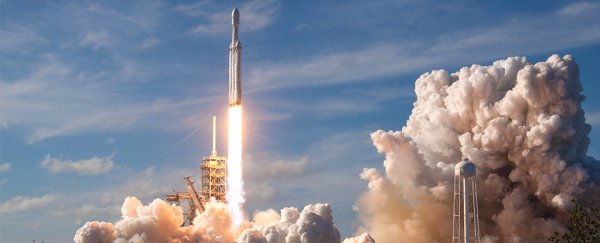A week after the successful launch of the Falcon Heavy, currently the world's most powerful rocket, SpaceX has analysed what went wrong, and Elon Musk has taken to Twitter to explain why the core booster did not land as it was supposed to.
The simultaneous landing of Falcon Heavy's two side boosters was like a finely choreographed work of art, as they gently touched down in tandem on landing pads at Cape Canaveral.
But the main core booster, supposed to land on offshore drone ship Of Course I Still Love You, missed its target by 100 metres (328 feet) because two of its three engines had failed to fire.
It landed in the Atlantic Ocean at a speed of 484 kilometres (300 miles) per hour, the impact of which damaged two of the drone ship's thrusters.
On Twitter, Musk explained that the problem was a shortage of ignition fluid.
"Not enough ignition fluid to light the outer two engines after several three engine relights," he explained. "Fix is pretty obvious."
He didn't elaborate, but the most obvious solution is more ignition fluid.
The explanation was one of two very interesting conversations in which Musk was participating earlier this week. In the other, he revealed that SpaceX is adding a third drone ship to its fleet of autonomous ocean landing barges.
It's currently under construction and will be named A Shortfall of Gravitas, after the spacecraft named Experiencing A Significant Gravitas Shortfall in the Culture series of sci-fi novels by Iain M. Banks.
The other two drone ships follow a similar naming convention. Of Course I Still Love You, used for Falcon 9 landings in the Atlantic Ocean off the coast of Florida, and Just Read the Instructions, in the Pacific Ocean at California's Vandenberg Air Force Base, are named after spacecrafts of the same names in the Culture novel The Player of Games.
A Shortfall of Gravitas will also go to Florida, where the two drone ships will be used to support future Falcon Heavy launches.

